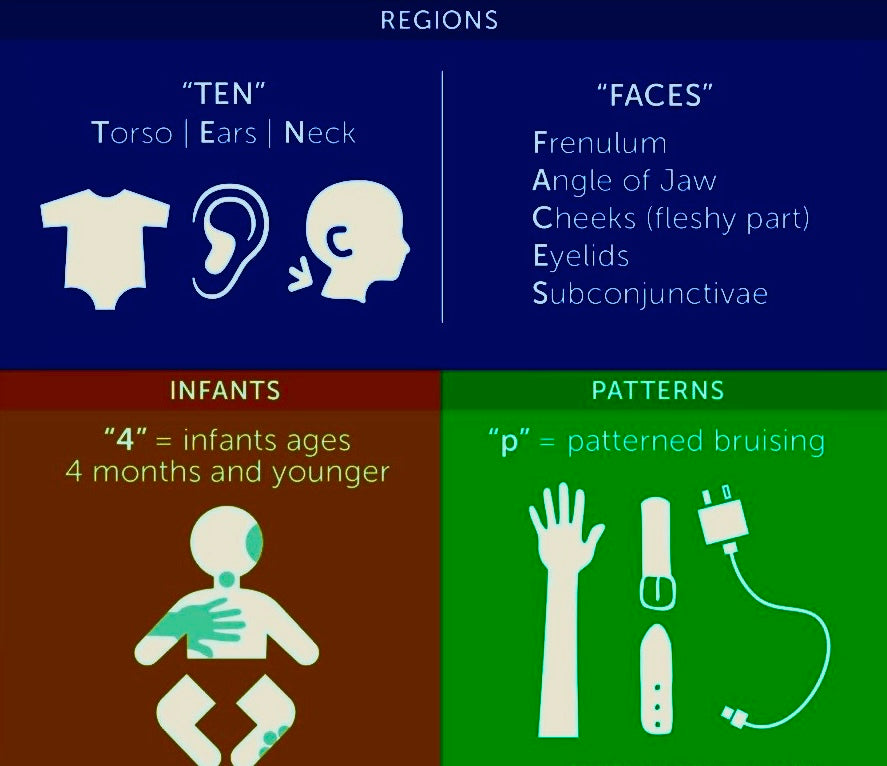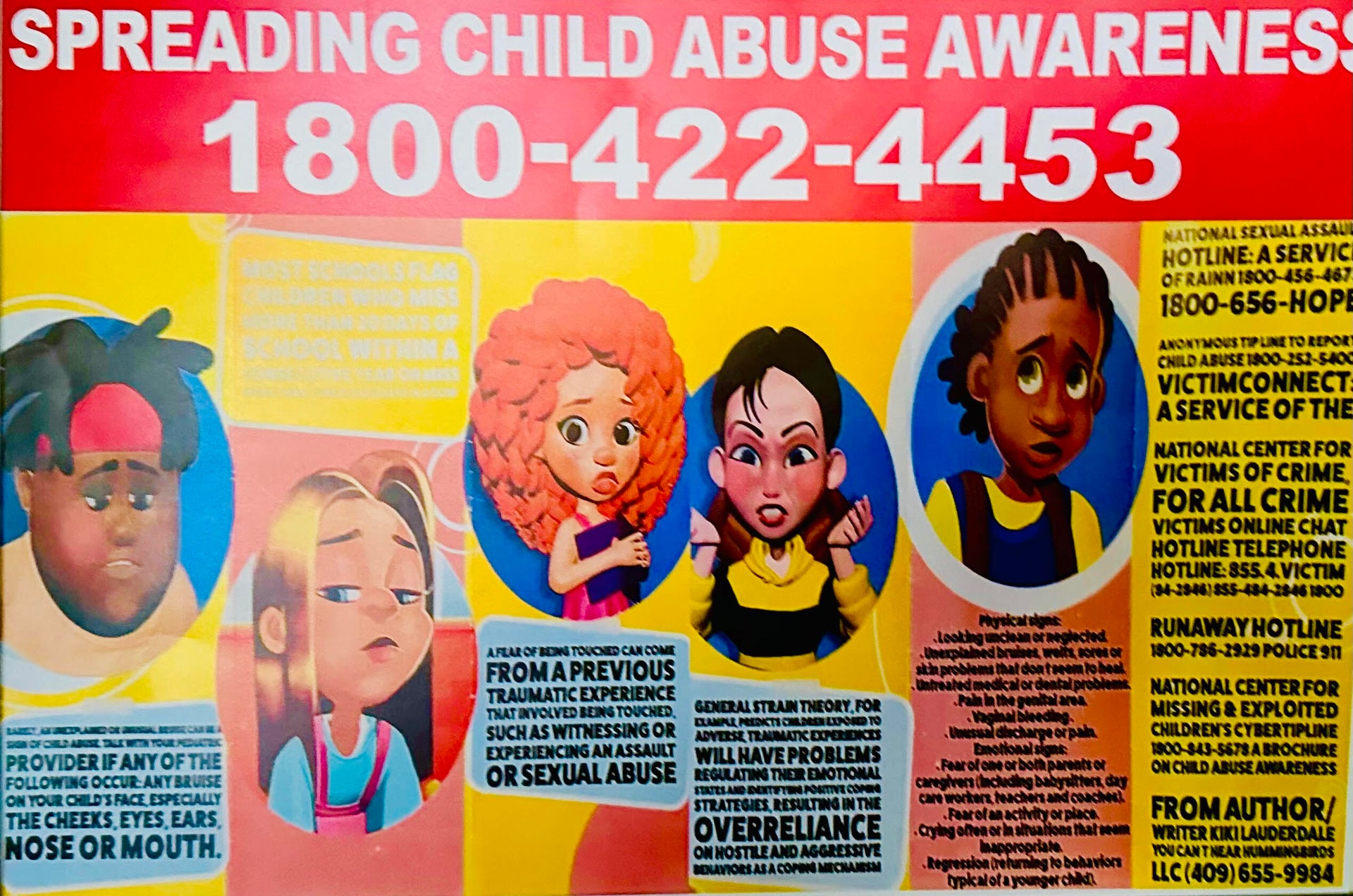What are signs of child abuse?
Signs of child abuse may not be obvious. You may first notice a shift in the child’s behavior. Or they may react differently to situations. Any change in a child’s behavior or temperament without an obvious trigger can be a sign of abuse.
Physical Signs
- Looking unclean or neglected.
- Unexplained bruises, welts, sores or skin problems that don’t seem to heal.
- Untreated medical or dental problems.
- Pain in the genital area.
- Vaginal bleeding other than a menstrual cycle (period).
- Unusual discharge or pain.
Emotional Signs
- Fear of one or both parents or caregivers (including babysitters, day care workers, teachers and coaches).
- Fear of an activity or place.
- Crying often or in situations that seem inappropriate.
- Regression (returning to behaviors typical of a younger child).
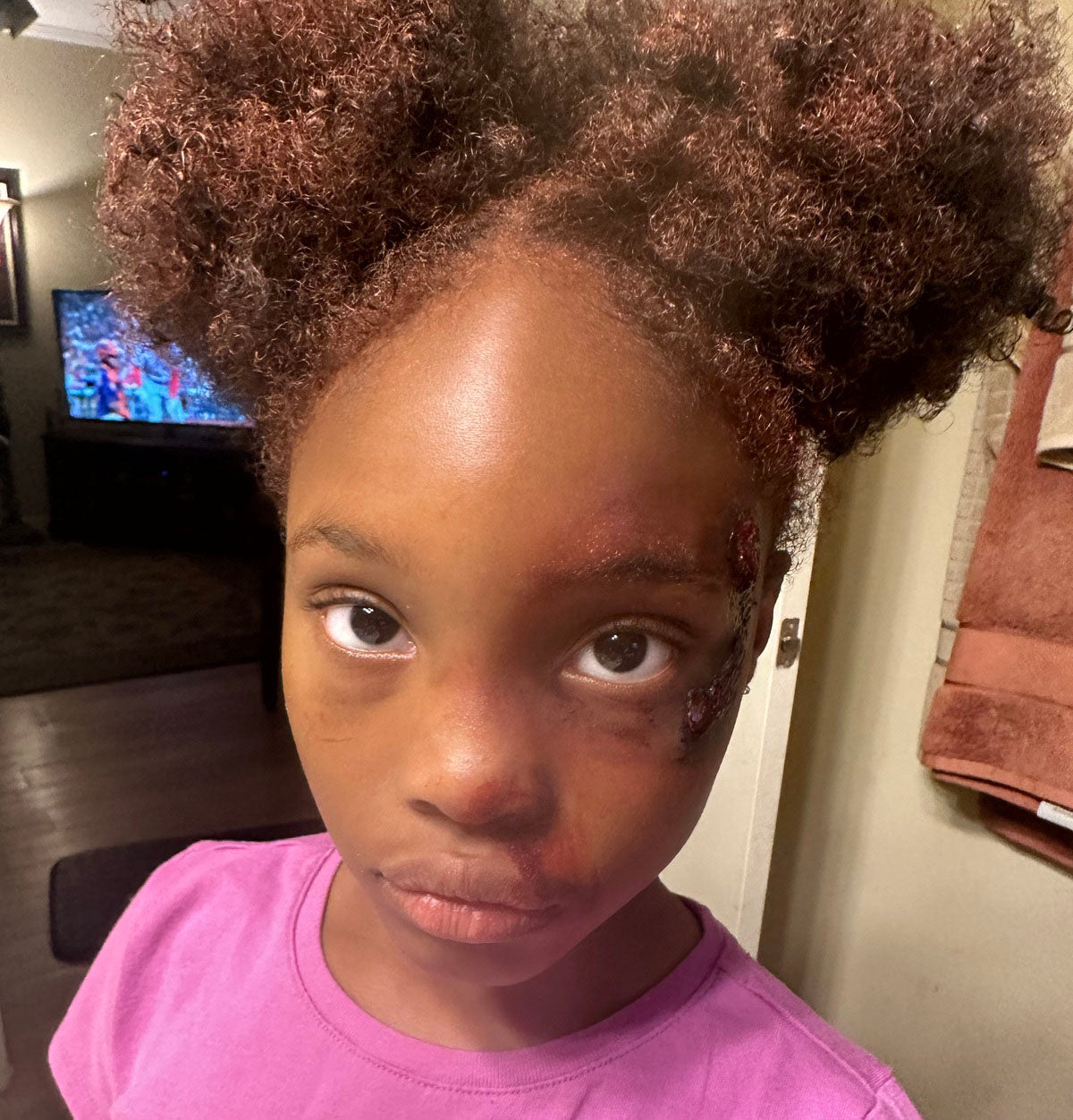
Emotional Abuse
Behaviors toward the child that cause mental anguish are considered emotional abuse (also called psychological abuse). Examples of emotional abuse are shouting often at the child, withholding kindness or affection, extended periods of silence, and harsh jokes at the expense of the child. Calling the child names or making other demeaning remarks can be termed emotional abuse and usually results in low self-esteem. Children who have been emotionally abused may suffer from depression or desperately seek affection. Other symptoms include social withdrawal and delayed or inappropriate emotional development.
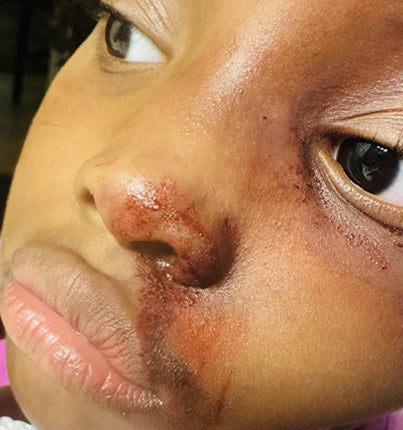
Behavioral Signs
- Acting different from other children, especially if it’s a sudden change.
- Frequent absences from school.
- Being withdrawn.
- Bullying peers or younger children or being bullied themselves.
- Trouble learning and paying attention.
- Avoiding physical contact with adults, peers or older youth.
- Overachievement or being overly eager to please.
- Unusual sexualized behaviors or comments, especially ones that seem more mature or pornographic.
Sexual Abuse
Sexual abuse is a deplorable and heinous crime, especially when it happens to a child.
Every nine minutes, a child protective services finds enough evidence to substantiate a claim of child sexual abuse, although we know child sexual abuse occurs much more frequently.
Child sexual abuse includes any kind of inappropriate sexual act or behavior with a child. It may also include non-physical contact (e.g., masturbation in the presence of a child, showing pornographic images to a child).
Research shows that the greatest risk to children doesn’t come from strangers, but from friends and family. Abusers may also be teachers, coaches or instructors, caretakers, and others in positions of authority.
An abuser may look and act just like everyone else, but the trauma they inflict is utterly devastating. Child sexual abuse can seriously damage a child’s cognitive, social and emotional development, and cause lifelong issues.
Child sexual abuse isn’t always easy to spot. RAINN (Rape, Abuse & Incest National Network) provides warning signs. Many of these warning signs alone may not indicate abuse, however when the signs are multiple or excessive, it may warrant contacting your child’s primary care physician or, if needed, seeking further evaluation.
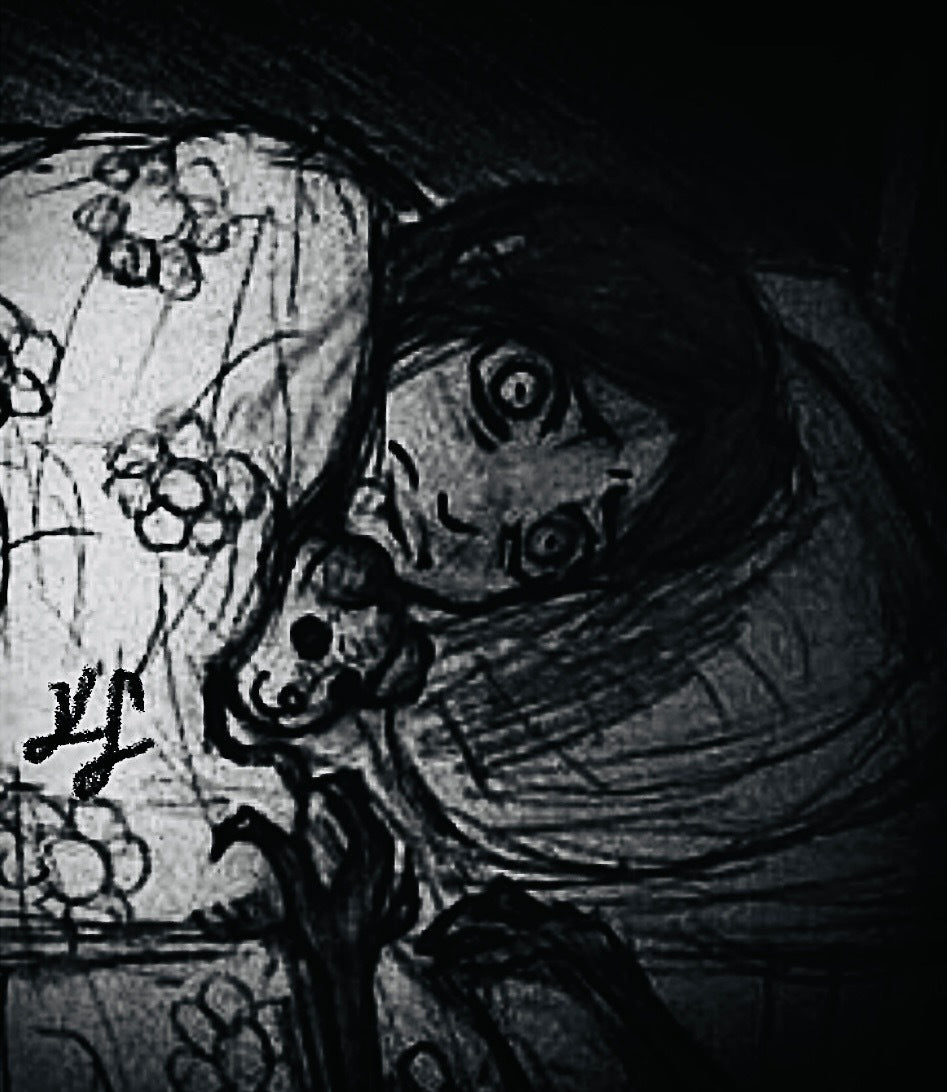
Physical Signs
- Bleeding, bruises or swelling in genital area
- Bloody, torn or stained underclothes
- Difficulty walking or sitting
- Abnormally frequent urinary or yeast infections
- Abnormal pain, itching or burning in genital area
Behavioral Signs
- Significant changes in hygiene, such as refusing to bathe or bathing excessively
- Trouble in school (absences, drop in grades)
- Inappropriate sexual knowledge or behaviors
- Night terrors or bedwetting in a previously potty trained child
- Phobias, depression, anxiety, PTSD
- Regressive behaviors, such as thumb sucking
- Angry outbursts, tantrums
- Withdrawn behavior, mistrustful of adults
- Overly protective and concerned for siblings, or assumes a caretaker role
- Running away from home or school
- Shrinking away from normal physical contact
- Self-harm, substance abuse, high-risk behaviors, suicidal thoughts or behaviors (especially in adolescents)
Although many children who have been sexually abused show signs, many others do not. If your child tells you that someone makes them uncomfortable, listen. If you suspect something isn’t right, don’t ignore it.
And, if your child discloses any sexual abuse, believe them. Children who have been sexually abused need a great deal of support so they can have the best chance at a full and healthy recovery. Your child’s primary care physician is a good first step for questions, and he/she can refer you to psychological counseling and community resources.
Care Center for sexually abused children, teens, special needs adults.
Other Types of ChildAbuse
Physical Neglect
Failure to provide food, clothing appropriate for the weather, super...
Emotional Neglect
Failure to provide emotional support, love, and affection. This inc...
Educational Neglect
Failure to enroll a school-age child in school or to provide nece...
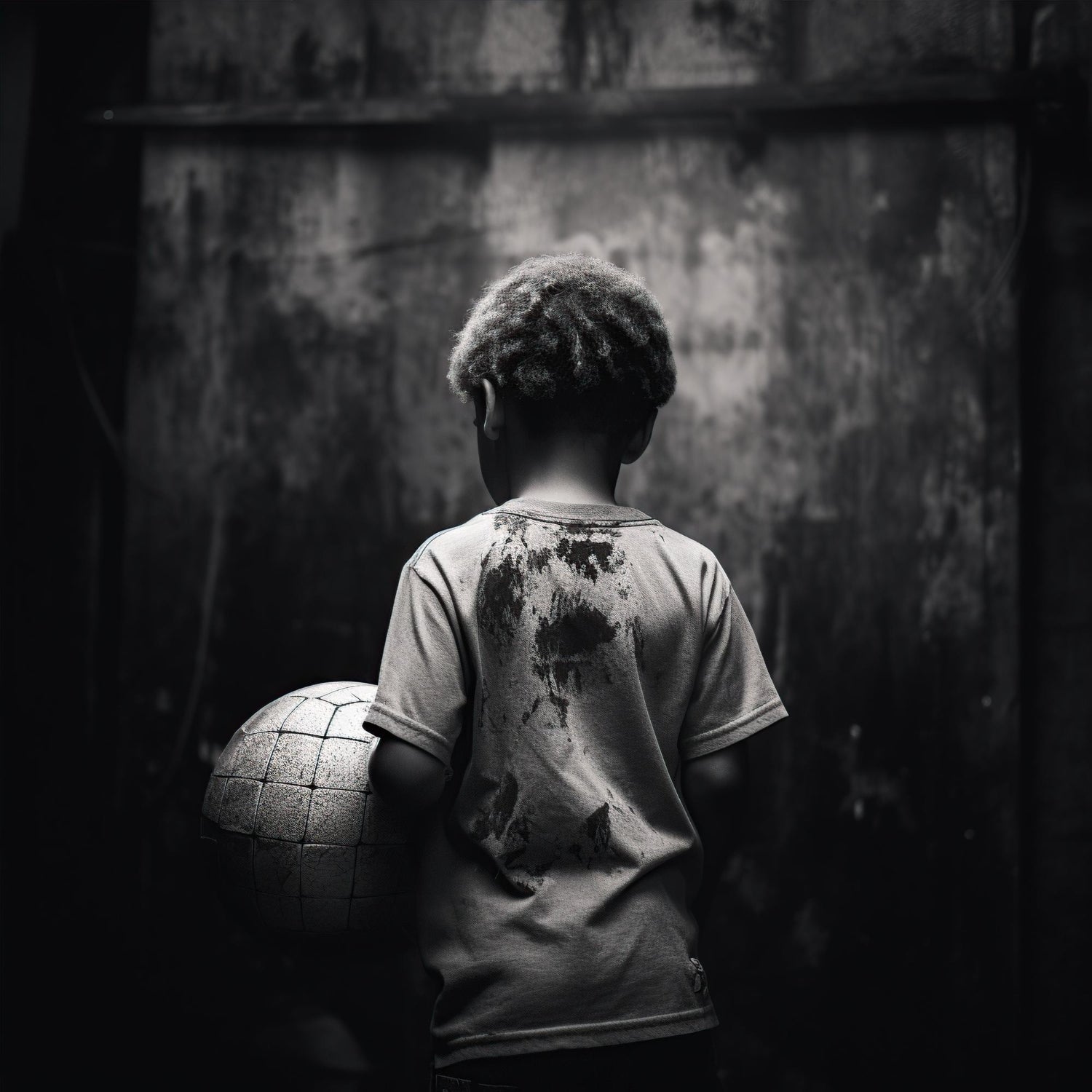
Mental / Psychological Abuse
Mental or psychological abuse happens when the abuser use verbal abuse and a series of actions or words, to wear away at the child’s ability to think straight, concentrate, or control their own sense of mental wellbeing and health. It often involves making the victim doubt their own sanity. We’ve heard stories of abusers flat-out denying that certain things had taken place. The result of this, especially over a sustained period of time – and often with the isolation that abusers also tend to use – is that the victim depends on the abuser more and more because they don’t trust their own judgment. They also hesitate to tell anyone about the abuse they’re experiencing, for fear they won’t be believed.
Financial/Economic
Because abuse is about power and control, an abuser will use any means necessary to maintain that control, and often that includes finances. Whether it is controlling all of the budgeting in the household and not letting the survivor have access to, their own money. If the child is a teenager with a job, or a disability receiving social security benefits, and the abuser is not letting the survivor have their own money, this type of abuse is often a big reason why someone is unable to leave an abusive situation.
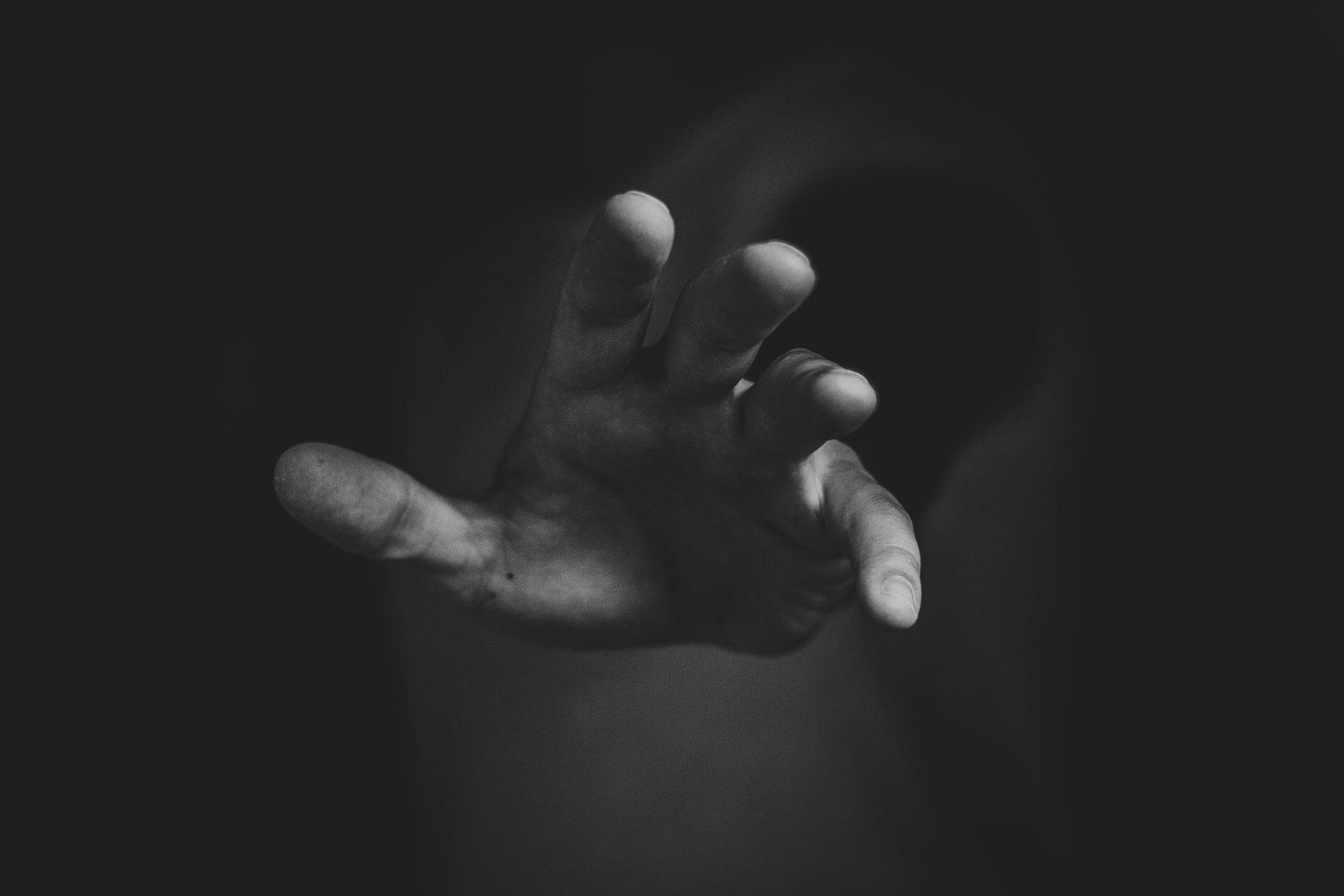
Examples of Child Neglect
- Not meeting a child's need for food, clothing, shelter or safety.
- Leaving a child unwatched.
- Leaving a child in an unsafe place.
- Not seeking necessary medical attention for a child.
- Not having a child attend school.
Who can be an abuser?
Frequently, the abuser is someone the child knows and is close to, including;
- Parent or other family member.
- Family friend.
- Caregiver.
- Anyone close to the child (teacher, coach, religious leader).
- Peers or older children who have experienced abuse themselves and are re-enacting what happened to them.
What happens to abused and neglected children?
Abuse and neglect have harmful effects on children. At worst, a child could die. More often, abused or neglected children live with fear or pain.
Abused or neglected children often experience:
- Frequent injuries.
- Learning problems.
- Fear or shyness.
- Bad dreams.
- Behavior problems.
- Depression.
- Fear of certain adults or places.
The effects don't end when the abuse or neglect stops. When abused or neglected children grow up, they are more likely to:
- Abuse their own families.
- Use violence to solve their problems.
- Have trouble learning.
- Have emotional difficulties.
- Attempt suicide.
- Use alcohol or other drugs.
Several organizations can provide information and advice about child abuse and neglect:
- American Humane Association 63 Inverness Drive East Englewood, CO 80112-5117 (303) 792-9900
- Child Help USA 15757 North 78th Street Scottsdale, AZ 85260 (800) 4-A-CHILD
- American Bar Association Center on Children and the Law 740 15th Street, NW, 9th floor Washington, DC 20005-1009 (202) 662-1720
- American Professional Society on the Abuse of Children 407 South Dearborn, Suite 1300 Chicago, IL 60605 (312) 554-0166
- Child Welfare Information Gateway Children's Bureau/ACYF/ACF/HHS 1250 Maryland Avenue, SW Eighth Floor Washington, DC 20024 Phone: 800.394.3366 Email
- Family Violence and Sexual Assault Institute 1121 East S.E. Loop 323, Suite 130 Tyler, TX 75701 (903) 534-5100 Email
- National Committee to Prevent Child Abuse332 S. Michigan Avenue, Suite 1600 Chicago, IL 60604-4357 (312) 663-3520 (800) CHILDREN - info. on getting involved/preventing abuse (800) 55-NCPCA - info. on parenting/abuse
- National Organization for Victim Assistance 1757 Park Road NW Washington, DC 20010 (800) TRY-NOVA
- Rape, Abuse, and Incest National Network 635B Pennsylvania Avenue SE Washington, DC 20003 (800) 656-HOPE
One of the most effective and most problematic tactics of emotional abuse is isolation. The abuser limits the amount of time the victim can spend with friends, family, and other people outside the relationship. As with other tactics of emotional abuse, isolation often happens slowly,
Poor oral hygiene practices can strongly Indicate neglect of a child.
Indicators can include a lack of brushing, advanced gum disease or tooth decay, and other signs. In addition to oral signs, unwashed clothes, malnourishment, and untreated medical conditions may point to neglect in children.
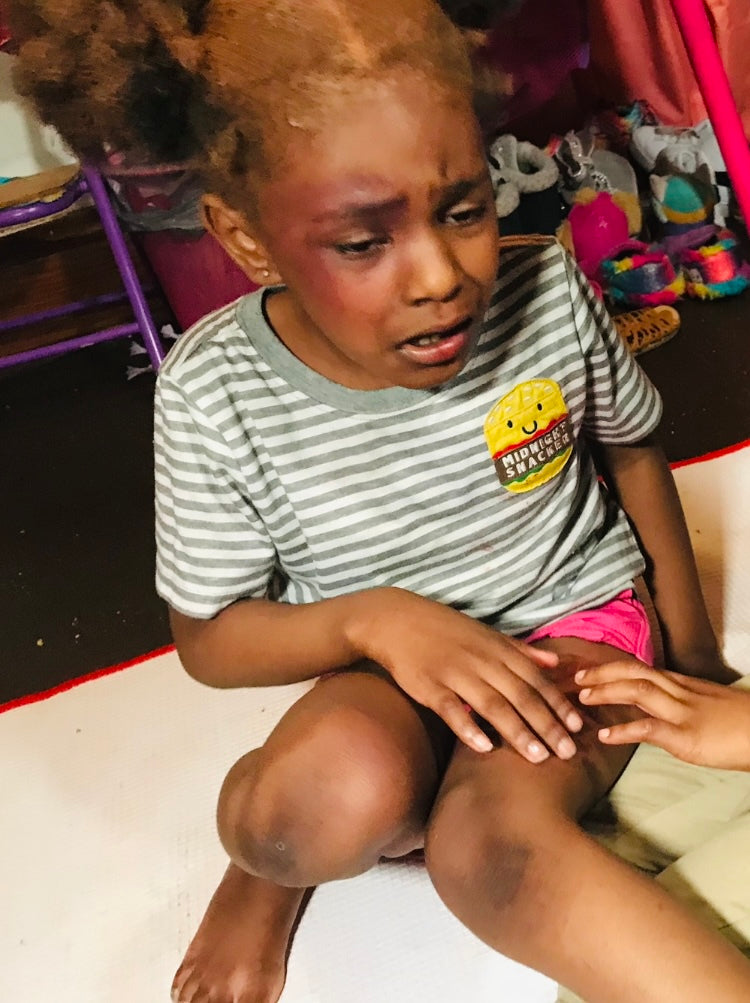
Statistics
Every year, more than 600,000 children in the United States are abused. In 2021, the latest year for which government data are available, an estimated 600,000 children (individual cases) suffered from abuse and neglect. It's possible that fewer abuse cases against minors are actually recorded. Over 7 million children are safe under the care of child welfare agencies.Of those, child protective services agencies conducted an investigation on or used an alternate response for about 3 million children. I have researched and obtained information on different responses from child protective services organizations. This is less than in prior years; different states have cited a decrease in the backlog as the reason for the difference. The youngest kids were the most susceptible. 15% of all victims are children in their first year of life, and 28% of victims of child abuse are children under the age of two. When child abuse was broken down by demographics, the rate of victimization among girls was 8.7 per 1,000, which was higher than the rate for males, which was 7.5 per 1,000. Among children of the same race or ethnicity, American Indian or Alaska Native children have the highest victimization rate—15.2 per 1,000—while African American children have the second-highest rate of child abuse cases. Child abuse is deadly. In 2021, an estimated 1,820 children died from abuse and neglect in the United States. Boys have a higher child fatality rate at 3.01 per 100,000 compared to girls at 2.15.4 African-American child fatalities (5.6 per 100,000) is 2.9 times greater than that of white children (1.94), and 3.9 times greater than Hispanic children (1.44).1 Nationally, neglect is the most common form of abuse. Three-fourths (76%) of victims are neglected, 16% are physically abused, and 10% are sexually abused, and 0.2% are sex trafficked.
How To Take ActionWhen you suspect a child is a victim of child abuse.
1. Stay calm and conversational if you notice bruising on a child.
- Ask non-leading questions, such as:
- What happened?
- Where were you when it happened?
- Did an adult see it happen?
2. Document what you see, hear, and ask. Include:
- Color, shape, location, and size of the bruising.
- What the child or parent says happened.
- A list of all questions you asked.
3. Make the report.
Contact Child Protective Services by calling
1(800)422-4453 or 911
Where to look for signs on infants to children age 4 years victims of child abuse.
The Acronym for T-E-N is torso, ears, & neck
TEN-4-FACE Bruising Rule
Kids are kids, and sometimes they play in ways that result in minor cuts, scrapes, and bruises. These minor injuries are often found
on bony areas of the body like knees, shins, elbows, and foreheads. However, there are other types of bruises that should be a red flag
for possible abuse.
When is bruising concerning for abuse in children younger than 4 years of age? If bruising in any of the three components – Regions,
Infants, Patterns – is present, strongly consider evaluating for child abuse and/or consulting with an expert in child abuse.
“ITENF”- Look at the Infants Torso,Ears, Neck and Face.
“FACES” Look at the Child’s
Frenulum- Angle of Jaw Cheeks and the (fleshy part) Eyelids Subconjunctivae
INFANTS PATTERNS
“4” = infants ages “p” = patterned bruising 4 months and
younger
REGIONS
